

Eat in Hong Kong like a MasterChef
Words & images by Sofia Levin
Last updated 23.06.2024
There’s not enough time to eat. That was my first thought when I saw the MasterChef Australia filming schedule in Hong Kong.
We had one full day off during a week on location, plus a couple of late call times – the equivalent of two days total to eat our way through Hong Kong. This detail is the written equivalent of a MasterChef dramatic pause; now imagine melodramatic music reaching its crescendo as it’s revealed that I ate at 20 venues over two days.
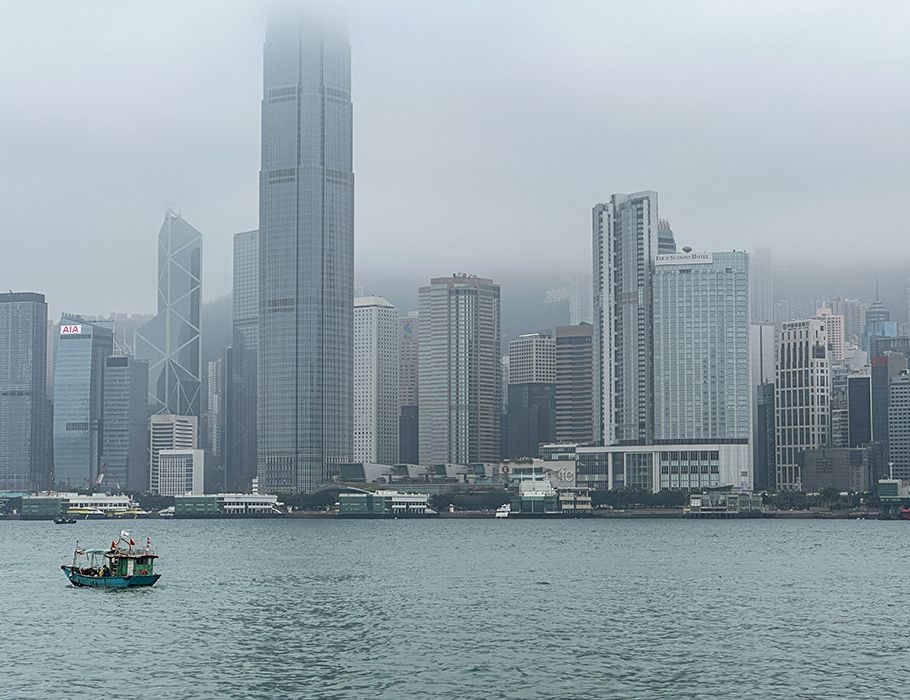




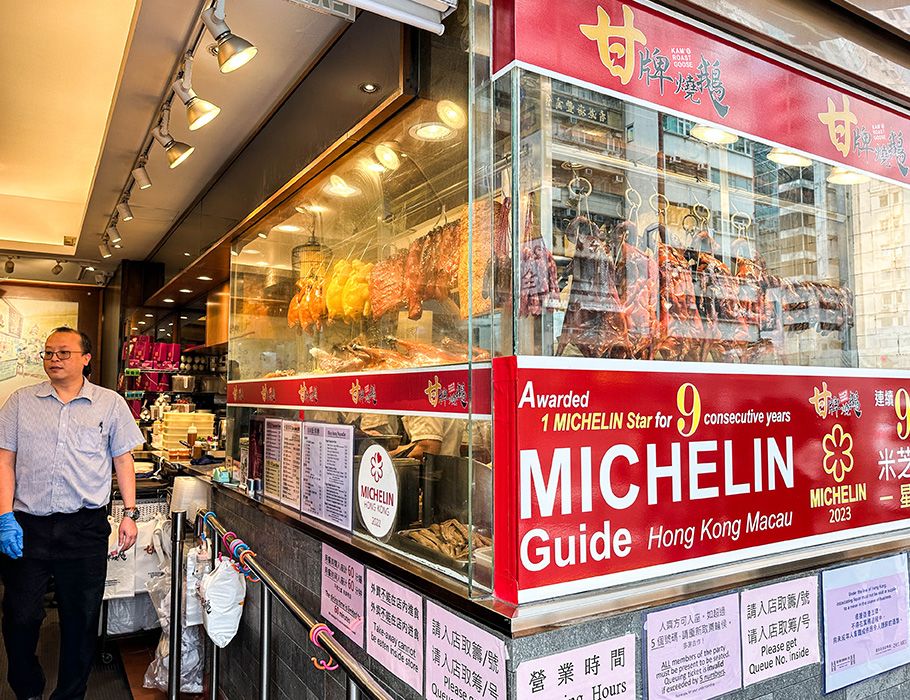


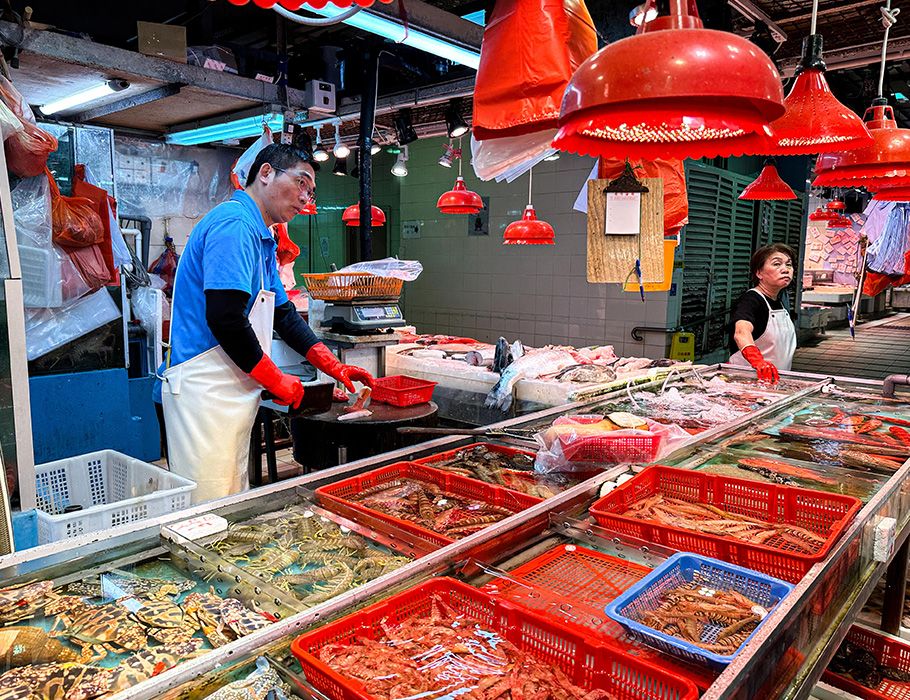
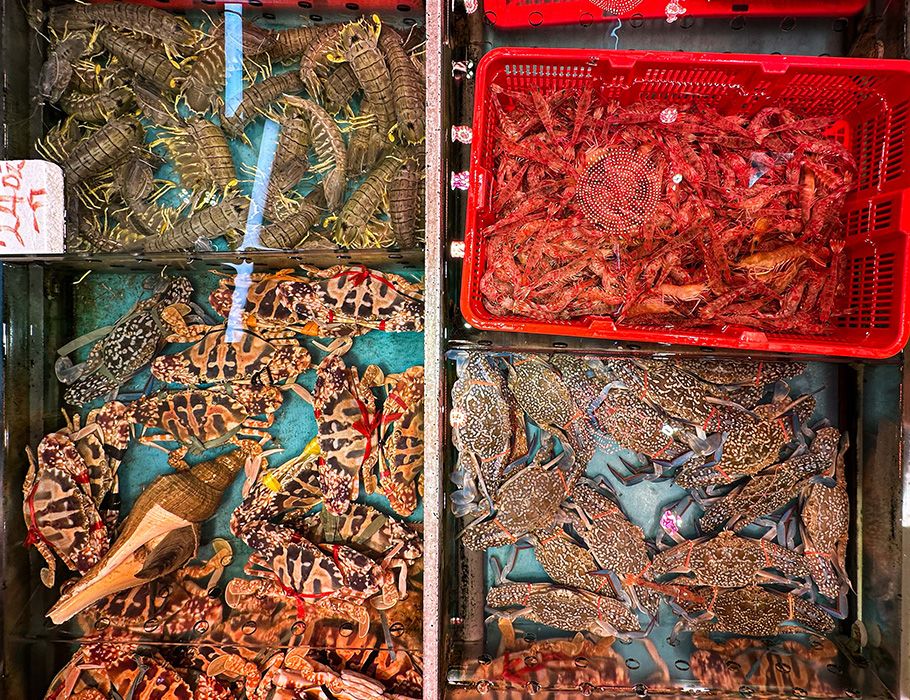
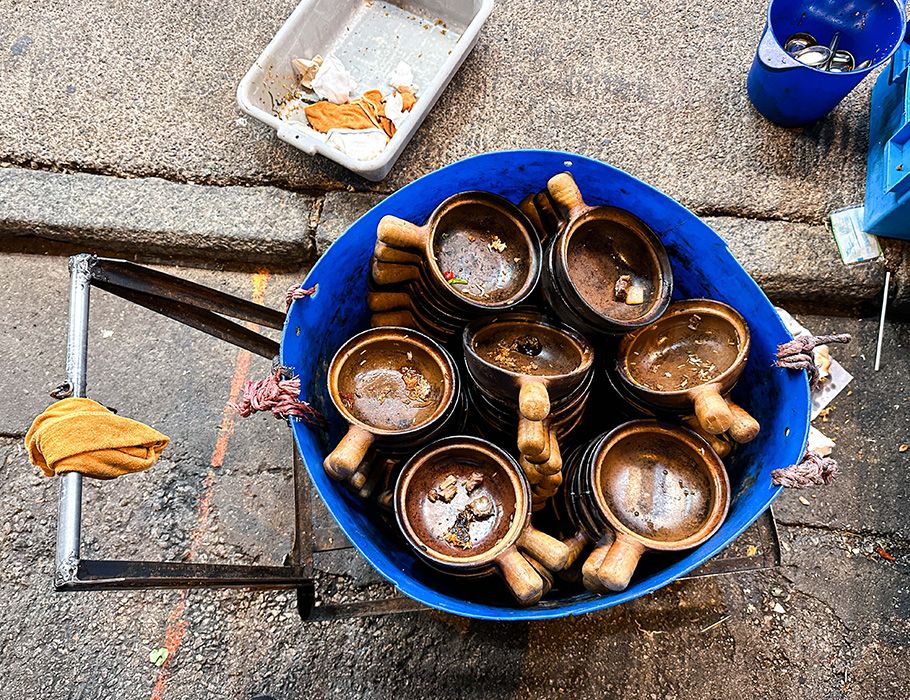
Hong Kong Food History
Home to some eight million people, Hong Kong is one of the most densely populated cities in the world. Its cuisine is an insight into its tumultuous history and long-standing significance as an economic hub and harbour. Hong Kong was largely populated by fishermen before it was colonised in 1841, after which it remained under British rule for 156 years. It was handed over to the People's Republic of China in 1997. China’s refugee crisis worsened following the Second World War, with immigrants flooding into Hong Kong to escape communism. Over the following decades, the city swelled on the tide of population increase, industrial development and globalisation. The working class needed to be fed, and fast.
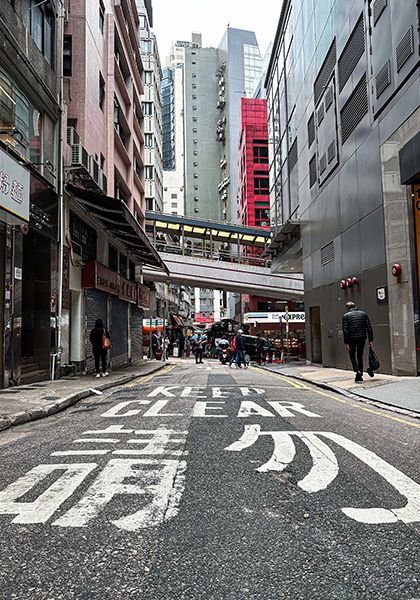
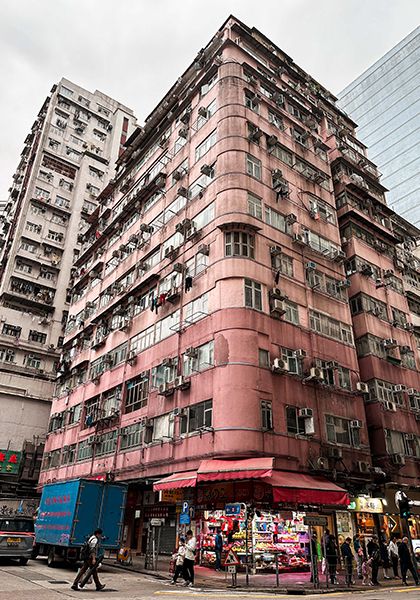

The cha chaan teng (茶餐廳), a diner-like “tea restaurant”, began to boom, cementing its popularity throughout the 1950s as an approachable alternative to high-end European restaurants. They remain popular, which is why you’ll see locals happily gorging themselves on thick French toast with peanut butter, pork chop rice with fried eggs and tomato sauce, and egg tarts with cups of yuanyang (a milky mix of tea and coffee). At the other end of the scale, Hong Kong’s well-travelled elite got a taste for European restaurants, leading to Cantonese chefs at international hotels modifying Western cuisine to suit the local palate, and serving what became known as “Soy Sauce Western” food, with the white tablecloths to match.
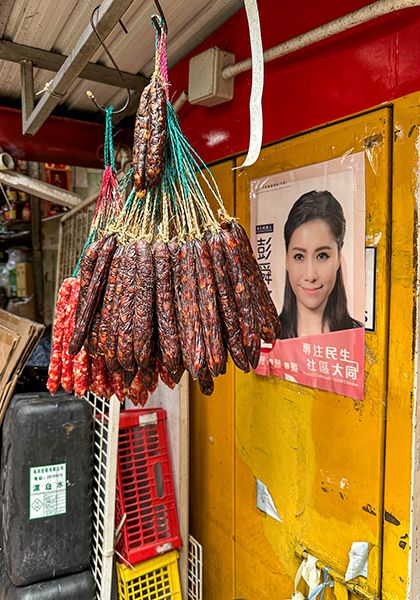
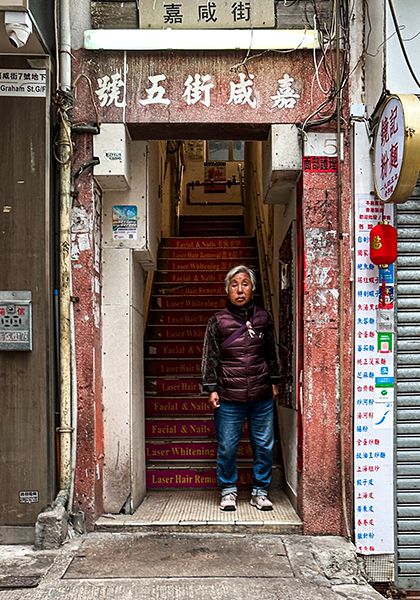
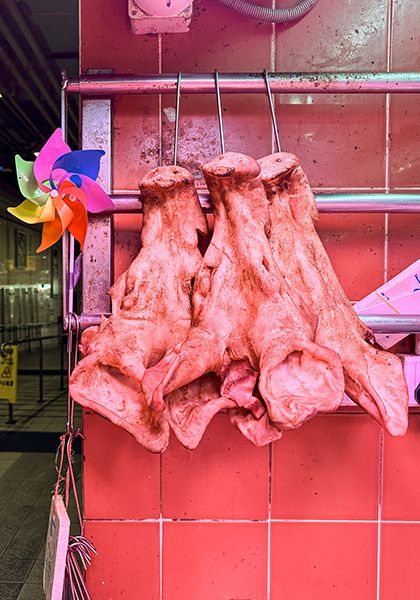
As for street food culture, hawkers have largely shifted into permanent shops near major activity hubs. The roving street vendors of the past moved into open-air clusters of no-frills stalls, collectively known as dai pai dong. Their proliferation, alongside food safety concerns, led to a government crackdown, where sellers were assigned to permanent locations with non-transferrable licenses. Consequently, these types of eateries are increasingly difficult to find.
More recently, Hong Kong restaurants are writing the next chapter of local cuisine, this time reinterpreting Hong Kong nostalgia and traditional recipes in contemporary settings. This ranges from energetic restaurants with neon lighting and vintage posters, through to highly evolved Cantonese food that’s impressing Michelin inspectors and The World's 50 Best Restaurants list. At the time of writing, Hong Kong boasts 79 restaurants with Michelin Stars.
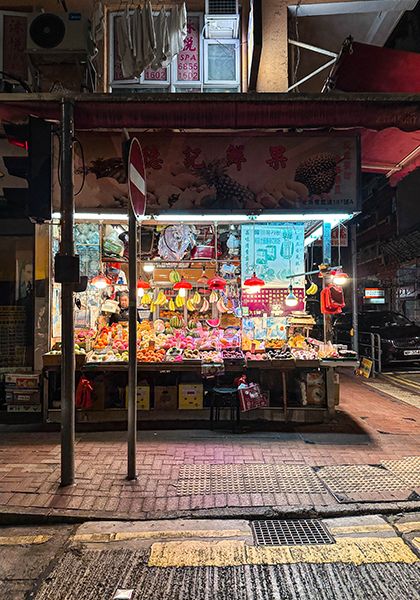


Hong Kong Dining Tips
Before you dive in, here are five helpful tips for dining in Hong Kong that I picked up along the way:
- Take Google reviews with a pinch of salt. Restaurants with 3.5 stars were still incredible.
- Book ahead wherever you can. People in Hong Kong love their food, so if a restaurant takes a booking, make one in advance.
- Know your order at casual eateries. Holding up a queue is not a good look, and can cost small businesses their bottom line.
- Carry some cash. Most establishments take credit card, but there are many smaller vendors that don’t.
- If Cantonese roast meats are on your radar, you’ll encounter queues at popular places. Order takeaway and you can skip to the front.
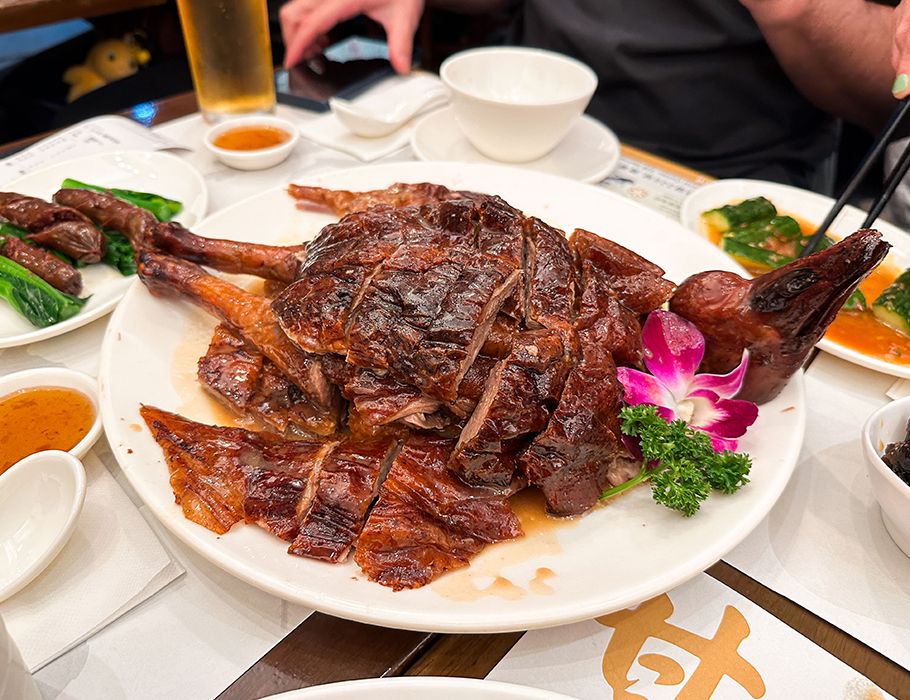
Everywhere I Ate in Hong Kong
While there are many more restaurants and street stalls I'd love to explore, the places where I ate in Hong Kong were compiled from research and local recommendations, and chosen based on proximity to filming (more highlights on my Instagram). It was such a joyful experience eating in another country alongside my fellow, food-obsessed judges, Poh, Andy and Jean-Christophe, as well as the MasterChef Australia crew, who definitely live to eat. Food is always better shared, and now I get to share this gastronomic city with you. Here's a chronological list of where I ate in Hong Kong.
Cheung Hing Kee
A Michelin Bib Gourmand chain known for Shanghai pan-fried dumplings called sheng jian bao. They’re golden-brown on the bottom with soft, thick wrappers and hot broth that will scald impatient mouths. Sheng jian bao are traditionally filled with pork, but this spot also offers other varieties such as pork with black truffle, shrimp, spicy mala pork and crab with roe. There are also wonton soups and noodles.
76 Thomson Road, Wan Chai, Hong Kong, facebook.com/HKCheungHingKee
MasterChef moment: Jean-Christophe attempting to have a conversation with the woman on the pans who doesn’t speak English about their kitchen processes.
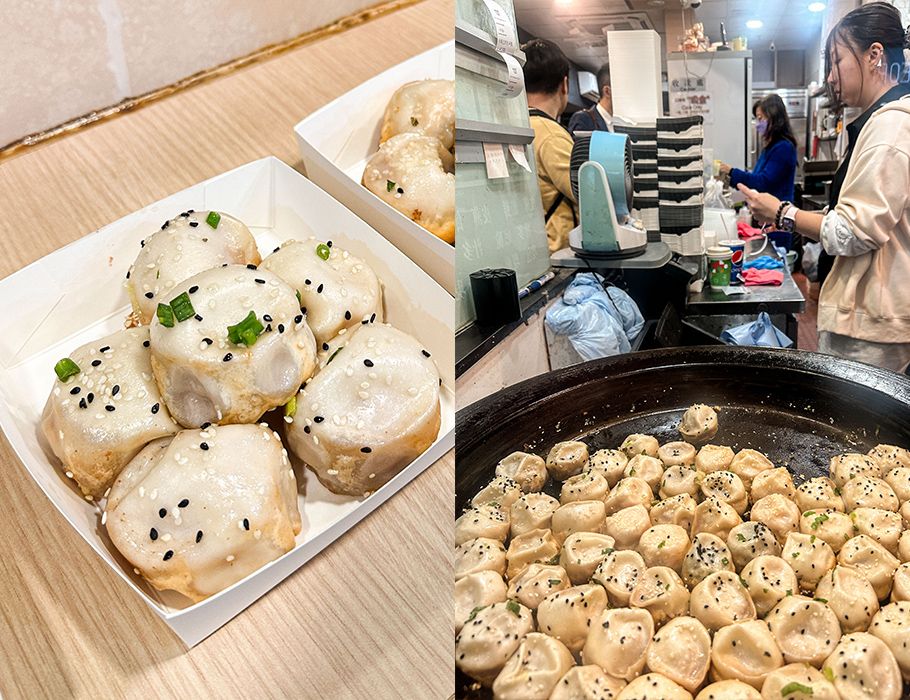
Deng G
Deng G opened its first Hong Kong branch in 2016, having already established a name for itself in Shangai. The restaurant spans the second and third floors of a building in Wan Chai; you'd miss it if you didn't look up. Deng G specialises in the numbing spice and fierce fragrances of Sichuan food, with chef Deng Huadong recognised for sharing the cuisine's nuanced flavours. Start with slippery, spicy dumplings, chilli-marinated ox tongue and aptly-named mouth-watering chicken, before moving onto minced pork noodles, camphor and tea smoked duck, or a huge bowl of sizzling mandarin fish braised with fire engine-red chillies. The restaurant also stocks more than 30 varieties of baijiu alongside Chinese-inspired cocktails.
Floor 2, 147 Queen's Road East, Wan Chai, Hong Kong, elite-concepts.com
MasterChef moment: Poh saying, “I’ll let you do it” when Andy went to mix the mince through our noodles, before diving in mid-toss because he wasn’t going fast enough.

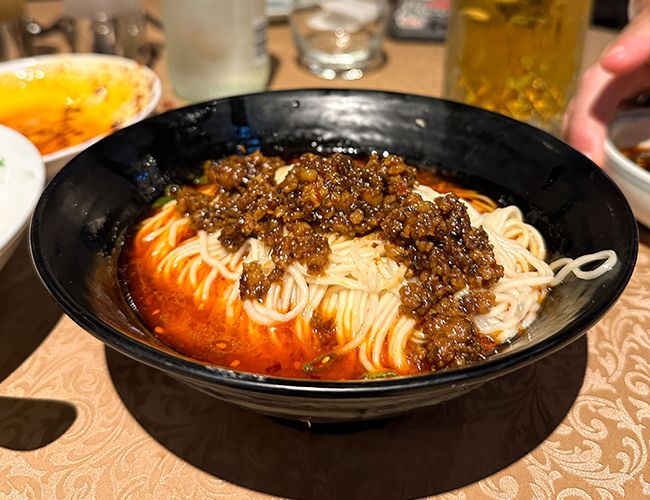
Honolulu Cafe
Established in 1940, Honolulu Cafe (Honolulu Coffee Shop on Google) is a classic Cha Chaan Teng where you can grab an egg tart from the service window, or sit inside with a milk tea and meals such as French toast, baked rice and roast meats. It’s one of the original tea restaurants, its name originating from the cafe’s signature Hawaiian-style roast coffee. The food here is satisfactory and affordable, but you'd visit more for the history and bustling, diner-like atmosphere.
Luen Sen Mansion, Hennessy Road, Wan Chai, Hong Kong, honolulu.com.hk
MasterChef moment: Poh being physically unable to resist buying a huge green cube of pandan chiffon cake (spoiler alert, it was parchingly dry).
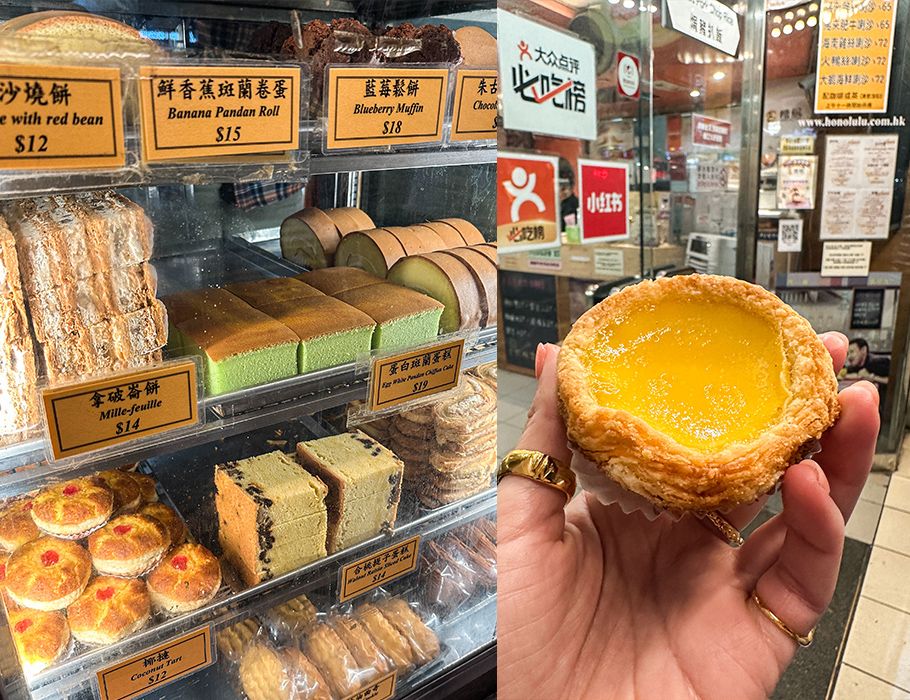
Sister Wah Beef Brisket
This second-generation, Michelin Bib Gourmand-recognised beef brisket noodle shop is no secret, as indicated by the queue that can snake down the road. The glass-fronted corner shop is small and steamy, with plastic stools crammed around a handful of low tables. Indicate your noodle preference and choose between beef brisket, tripe, tendon or a combination of all three in your broth. A head’s up: the real winner here is the gelatinous, melt-in-the-mouth tendon. There’s a better, less-famous beef brisket noodle soup shop just up the road. Keep scrolling down to Eight Treasures for more information.
13 Electric Road, Causeway Bay, Hong Kong, instagram.com/sisterwah
MasterChef moment: Andy and crew bringing their own beers from a nearby convenience store.
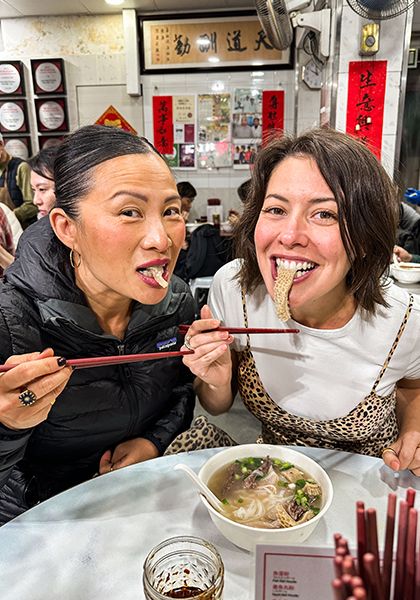


Trusty Congee King
This bright, modern cafe centres its menu around comforting bowls of congee, all cooked with fish broth for extra depth. There is a huge selection available, whether you prefer your congee with eel, scallop, shrimp, fish belly, meat balls, pork liver and intestine, chicken, baby oysters and more. Combo sets will score you a drink, congee and a snack such as dumplings or deep-fried fish skin with preserved egg yolk. The portions are huge, so your best bet is to order a single congee between two and a couple of sides to share. The cheung fun (rolled rice noodles) and stir-fried noodles are also favourites here. There are other branches of Trusty Congee King, but this Wan Chai location is continuously recognised by the Michelin guide as Bib Gourmand-worthy.
7 Heard Street, Wan Chai, Hong Kong, instagram.com/tck.hk
MasterChef moment: Upon realising this was just around the corner from Kam’s Roast Goose, Poh and I left Andy and my hair and make-up wonder woman, Maureen, in line for roast poultry while we went and ate here! Don’t worry, we took them some takeaway (aka our leftovers).

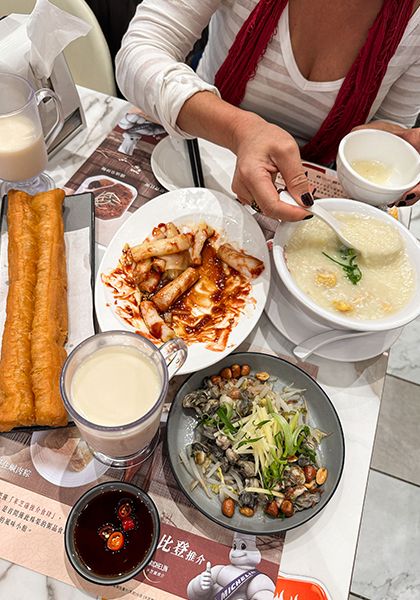
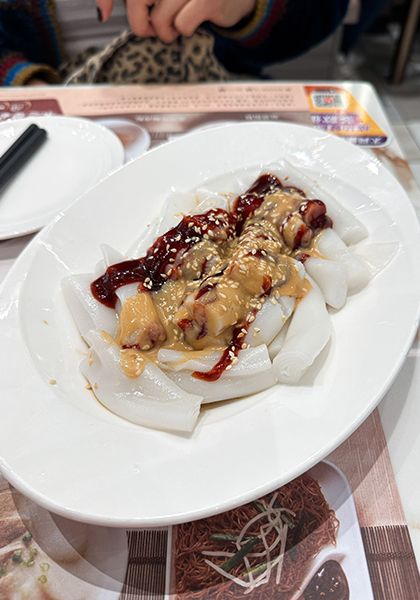
Kam's Roast Goose
Believe the hype, Kam’s Roast Goose is the best roast poultry I’ve tasted. Every mouthful is a nibble of nirvana: supple, perfumed dark meat and perfectly rendered skin with a top layer that shatters and hides melty fat underneath. The family has been known for their roast goose for more than 70 years, starting with their grandfather opening Yung Kee restaurant in 1942. Kam’s Roast Goose is named in his honour and run by the third generation. It was awarded a Michelin Star within six months of opening in 2014. We also ordered bouncy “Prince Kinsen” noodles cooked in goose fat, marinated black fungus with vinegar, garlicky cucumbers, gai lan and cured goose liver sausages fragrant with plum wine. With just 36 seats, there’s a queue an hour before it opens, but it’s absolutely worth the wait.
226 Hennessy Road, Wan Chai, Hong Kong, krg.com.hk
MasterChef moment: We devoured our duck so quickly, and obviously enjoyed it so much, that the table beside us leaned over and asked if we wanted to finish off their duck, too!

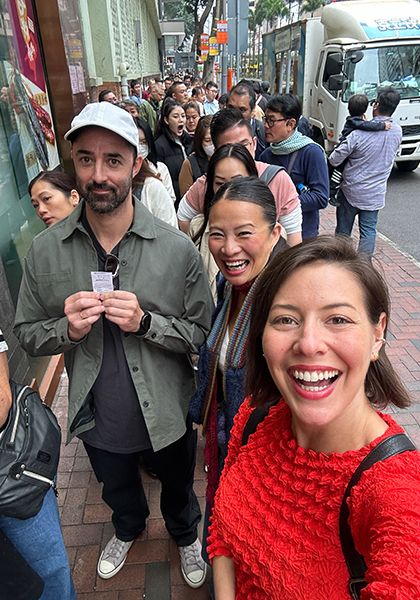


Hing Kee Restaurant
This traditional claypot rice restaurant is so popular that it’s expanded over five shopfronts. Up to 30 claypots are systematically cooked over fire at once, with more than 70 ingredient options to choose from. Pick something simple and traditional, such as chicken peppered with Chinese sausage in a sticky, soy-based sauce; or eat curiously with toppings such as duck tongue, eel and frog. Hing Kee might be known for claypot rice, but the family-style dishes also shine. I can vouch for fiddly-but-delicious jumbo mantis shrimp lurking beneath a torrent of garlic chips; sweet stir-fried razor clams; and a dish called Three Treasures, written on the English menu as “local style deep fried stuffed eggplants, capsicum and bitter melon”, which sees those vegetables stuffed with fish paste and fried until they resemble puffy golden pillows.
12, 13A, 15, 17 & 19 Temple Street, Yau Ma Tei, Hong Kong, instagram.com/hingkeehk
MasterChef Moment: Waiting an eternity for tissues (but not food), only for Poh to pull some from her handbag and subsequently get a scolding look when the server returned with a packet.
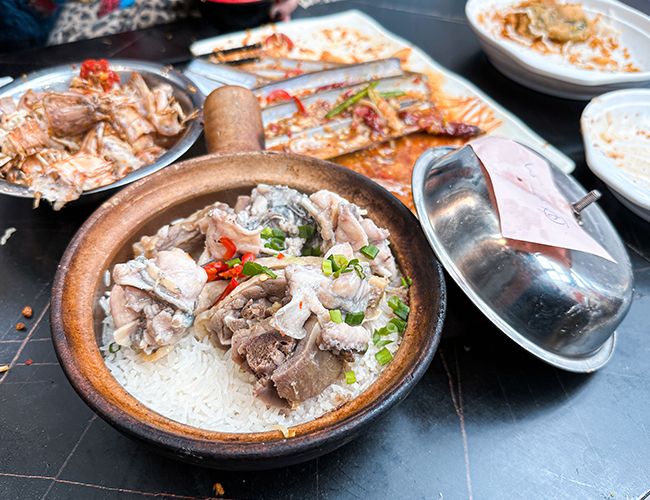
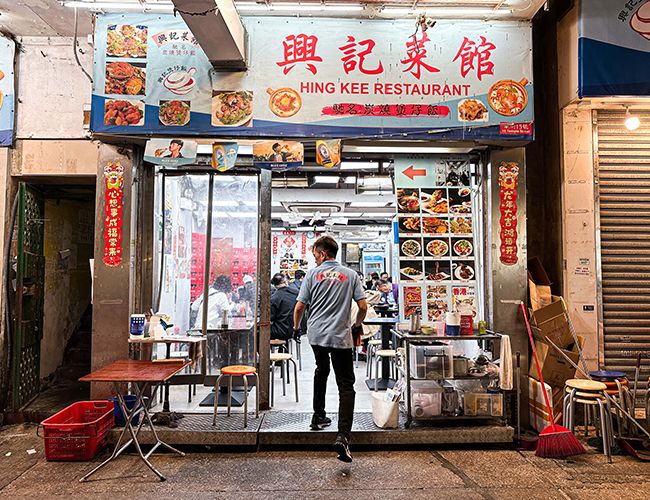
Kai Kai Dessert
This Bib Gourmand dessert spot is extremely popular. We arrived at 11.15pm and still had to line up. There is an automated seating system: select the number in your party, retrieve a printed ticket, and wait for the female robotic voice to call your number. It’s a basic affair inside with laminate timber floors and heavy, scratched wooden tables, but the traditional sweet Chinese soups are anything but basic. There’s no English menu, so fire up Google translate and order via QR code. You might try sticky rice with coconut milk, taro with lotus seeds, peanut and glutenous rice porridge or my personal favourite, ginger soup with black sesame-filled glutinous rice balls.
29 Ning Po Street, Jordan, Hong Kong, instagram.com/kaikai_dessert
MasterChef moment: Poh practicing her Cantonese and imitating the robot voice every time a number was called.
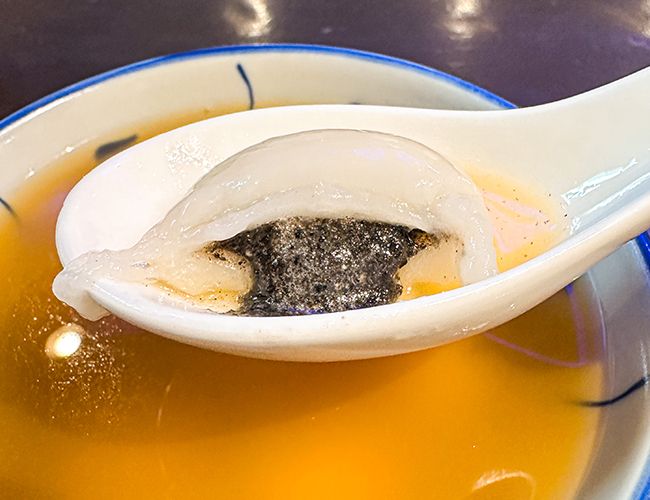
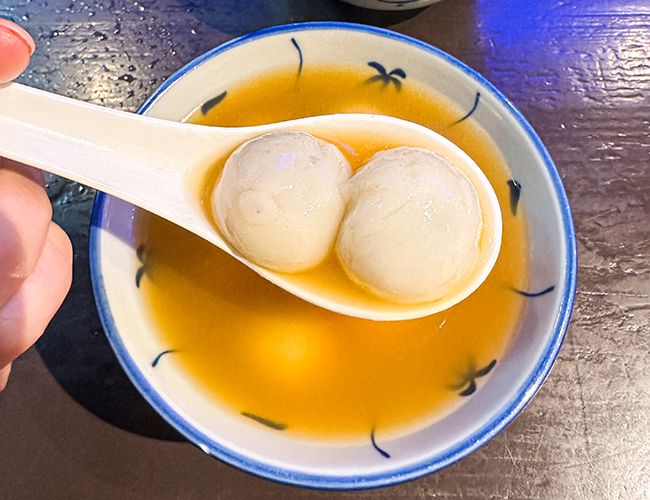
VEA Restaurant
At Michelin-Star restaurant, VEA, chef Vicky Cheng combines French technique with classic Chinese ingredients. His six and eight-course degustation menus epitomise the upper echelons of modern Hong Kong dining – and not just because the restaurant is located on the 30th floor. The space is an open kitchen, bordered by 25 cream leather seats that undulate around a curved marble counter. To call Vicky’s food fusion would do a disservice to how seamlessly he blends French and Chinese cuisine. It’s more of an amalgamation, built on his philosophy of food as a universal language. Expect to see giant, alien-like dried fish maw before eating it with caviar and quinoa, abalone in a perfect gleaming pithivier and what looks like whole roasted sea cucumber but is so much more. Drinks pairings can be regular, Chinese or premium wine, as well as alcoholic or non-alcoholic cocktails.
Floor 30, The Wellington, 198 Wellington Street, Central, Hong Kong, vea.hk
MasterChef moment: You’ll have to watch season 16, episode 38 for that!
Man Kee (Yummy Food)
A small, unassuming local spot for some of the best wonton noodles and dumplings in the area. The must-order is a big bowl of wonton peanut noodles; a rich, porky soup that comes bobbing with slippery wontons and oily marinated pork mince that leaches visible flavour into the already luscious noodle soup. Order it as a combo with a hot drink and house-made potsticker dumplings (you’ll see them being made at the back of the shop). Incredible value for HKD $63 (AUD $12).
May Ka Mansion, 21-23 Fort Street, North Point, Hong Kong
MasterChef moment: After I ate here on a whim and Maureen declared it the best noodle soup she’d tasted, it became the spot most frequented by the MasterChef crew.

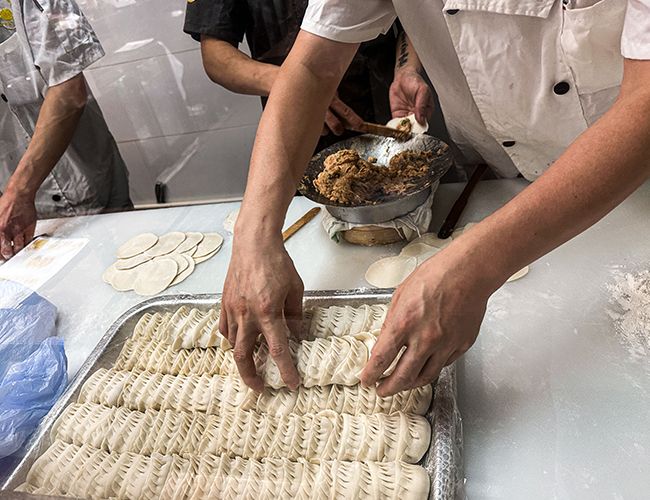
Ho Lee Fook
Pass the giant chrome fortune cookie at the entrance and descent the red-carpet stairs, past walls of gold maneki-neko (waving cats), to this mirror-ceilinged, Chinese-wallpapered subterranean restaurant. It is one of the highest-octane modern Hong Kong dining experiences you can have in terms of both flavour and atmosphere. Chef ArChan Chan has cooked in Melbourne and Singapore, but Ho Lee Fook is her tribute to the food she grew up eating. Highlights include a prawn toast-okonomiyaki hybrid piled with shaved cabbage and bonito flakes; steamed razor clams tangled with glass noodles that soak up aged garlic and soy sauce, absurdly silky steamed crab and roe custard; and the signature duck that marinates for three days, its brittle skin and soft flesh served separately with classic condiments, pancakes, house pickles and mala beef sauce.
3-5 Elgin Street, Central, Hong Kong, holeefook.com.hk
MasterChef moment: Getting yelled at by the raging owner of Leaf Dessert across the road (2 Elgin Street), an open-air stall that serves lauded beef brisket wonton noodle soup, but that you absolutely can’t point a camera anywhere near unless you want to be “ripped a new one”!

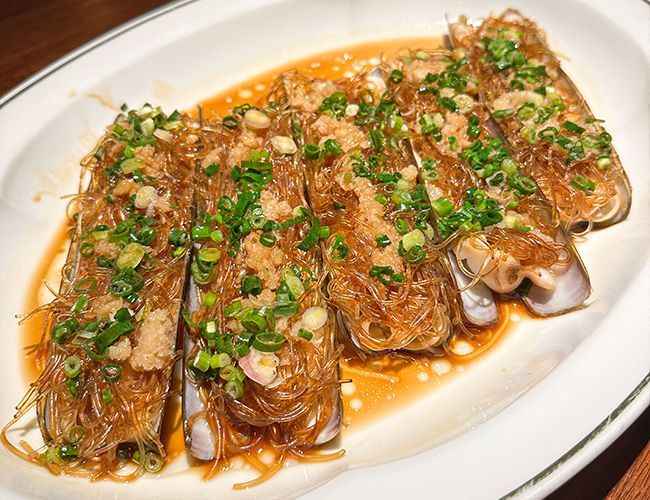
Eight Treasures
There are lots of popular beef brisket noodle soup shops in Hong Kong, but this is one of the greats. It’s a different atmosphere to Sister Wah up the road, less bustle and more modern, but the bowls here are superior. The tender brisket flakes at the slightest tough of a chopstick, while large chunks of white radish absorb the heart-warming herbal broth. There are different beef cuts and bits available, from short rib to honeycomb tripe and tongue. You can also order your noodles separately, dipping and mixing as you see fit.
Wing Wah Building, 124 Electric Road, Tin Hau, Hong Kong, facebook.com/eighttreasures
MasterChef moment: This was one of the few occasions where Poh didn’t join me, but she insisted we go back together when I told her about it, because FOMO (aka FOPOH)!
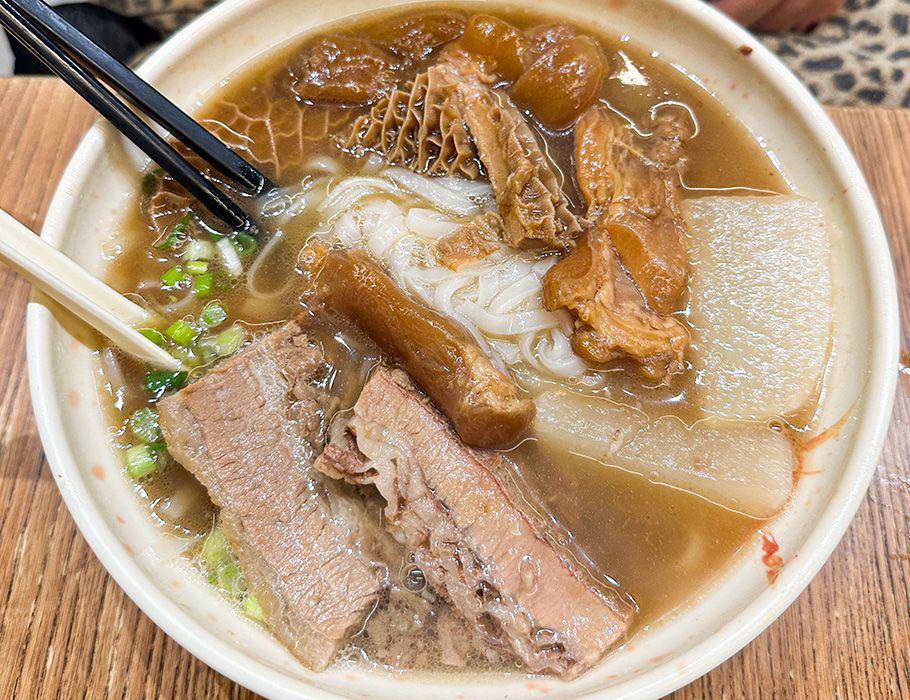
Seventh Son Restaurant
I was determined to get a crew together for yum cha and settled on Seventh Son because of its reputation for exquisite whole suckling pig (must be pre-ordered). Chef Chui Wai Kwan opened the first outlet in 2013, but the family has a long culinary history. He is the seventh and youngest son of Chui Fook Chuen, who founded the celebrated Fook Lam Moon restaurants in 1972. But back to the pig: it’s presented whole at the table, skin brittle and glistening, before being dismantled. The skin is served on bao disks with scalloped edges and hoisin, while the rest of the animal is chopped, plated and placed on the lazy susan. Ask what can be pre-ordered at the time of booking to avoid missing out on dishes like gelatinous stewed grouper with bitter melon and bean curd. That said, you can’t go wrong with traditional dim sum, either.
57-73 Lockhart Road, Wan Chai, Hong Kong, seventhson.hk
MasterChef moment: In between filming, all the crew did was talk about food. That’s how we discovered that both someone in the food team and I had separately booked tables of 10 here on the same day. Seventh Son was extremely helpful and combined our groups in a private room. It was a pig party!
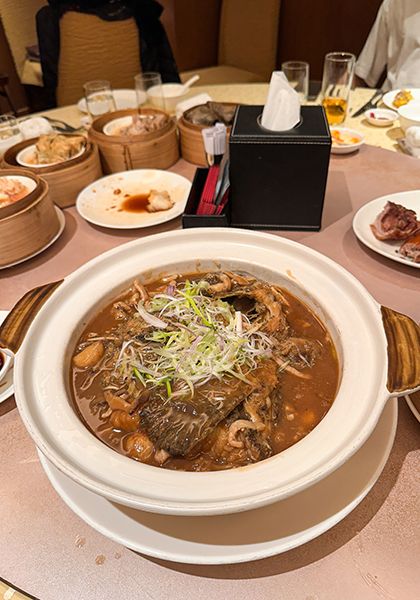
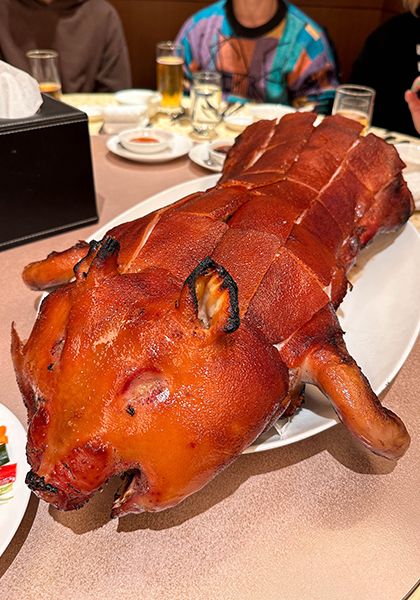
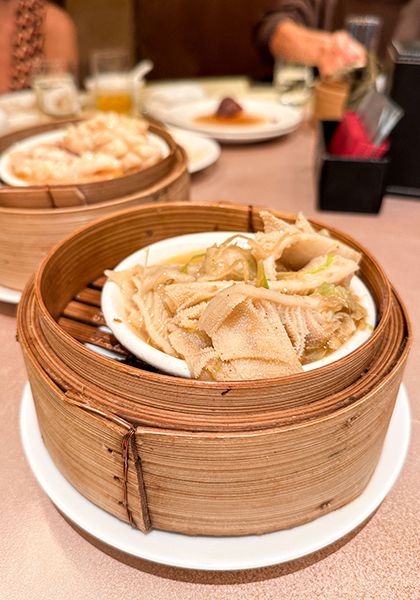
Wing Restaurant
It’s difficult to put into words how I feel about Wing Restaurant, Vicky Cheng’s deeply personal fine diner that opened in 2021. It’s one floor below VEA but leans far more into his Chinese heritage. Perhaps one way to convey the standard is the fact that Wing catapulted to number 20 on The World’s 50 Best Restaurants 2024 list, having never been on it prior. The decor is contemporary chinoiserie, with decorative white fretwork, green panels and cool, textured glass. The main dining room only seats 16 and there are two private rooms for up to eight. The latter have balconies that open to the harbour. Wing’s seasonal menu is based on the 24 ancient Chinese solar systems that indicate weather patterns. When we dined, highlights included chef Vicky's take on century eggs with clear, almost iridescent whites, served with chilli shirako (cod milt); plump sea cucumber spring rolls; Alaskan king crab with fried cheung fung; and whole baby pigeon glazed with sugar cane. Every dish was so finessed and thoughtful that it made me pause in admiration before eating. The links between tradition and today are impeccably unified. To eat at Wing is insightful, educational and an absolute privilege.
Floor 29, The Wellington, 198 Wellington Street, Central, Hong Kong, wingrestaurant.hk
MasterChef moment: The only way we could get a table at Wing was to eat before service, which meant we had the privilege of Vicky joining us. Hearing the story of every dish straight from the source is something I’ll never forget. Just as importantly, Poh and I convinced chef Vicky to take his first ever mirror selfie.

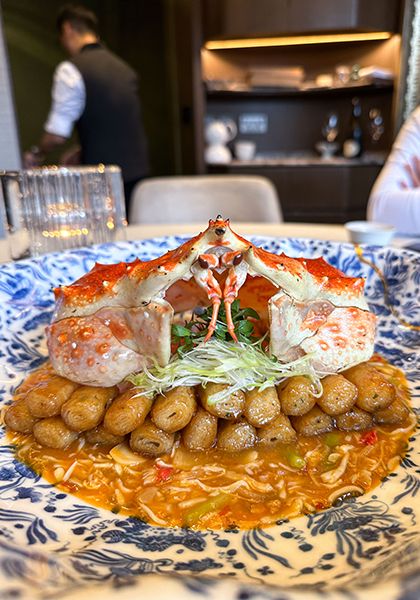

Temple Street Night Market
Almost everyone who visits Hong Kong has this energetic night market on their itinerary. There are open-air performances, souvenirs and knick-knacks aplenty, but it’s also a great way to eat a range of Hong Kong specialties in one lively spot. We visited multiple stands, sampling snake soup (thick, silky and comforting), fish balls (bouncy and filling), skewered pork fallopian tubes (chewy and unpleasant) and even soft serve from a historical “Mister Softee” mobile ice-cream van. Temple Street Night Market opens in the afternoon but is best after dark when the lanterns and neon lights add to the electric atmosphere.
Temple Street, Jordan, Hong Kong, temple-street-night-market.hk
MasterChef moment: Chef Vicky accompanied us after our meal at Wing. The only thing better than the contrast of his considered degustation followed by street snacks was how excitedly he urged us to continue eating!
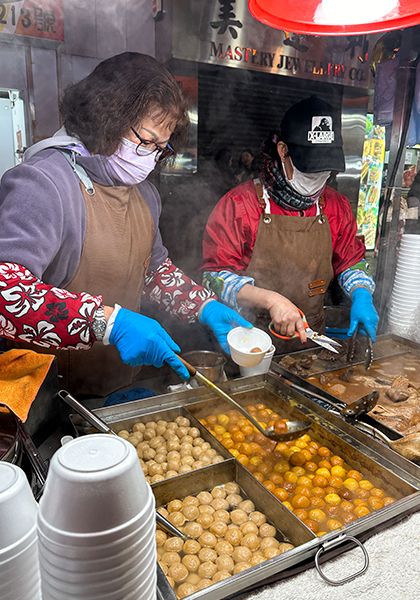
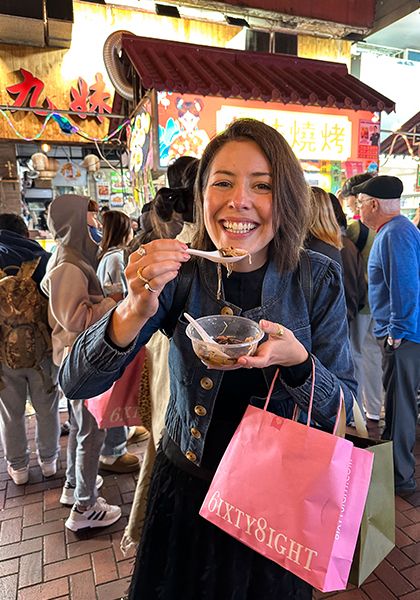

Chung Kee Congee
There are countless pared-back congee shops in Hong Kong, but this is one we stumbled upon while on location. We clocked it as soon as we pulled up, thanks to a fast-moving queue of locals ordering takeaway. The menu is easy to navigate; there is regular congee with add-ins like pumpkin, salted egg or sliced fish, and slightly more premium meat-based congee with any combination of pork offal, chicken and abalone. Chinese doughnuts of different shapes are ready to go from the street display, and there’s also a selection of cheung fun (steamed rice noodle rolls).
Millan House, 2-4 North Point Road, North Point, Hong Kong
MasterChef moment: Andy and I attempting not to spill food on our outfits while scoffing food in the van between locations.
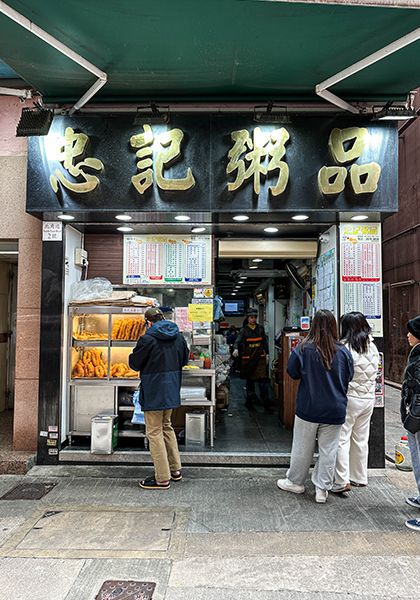
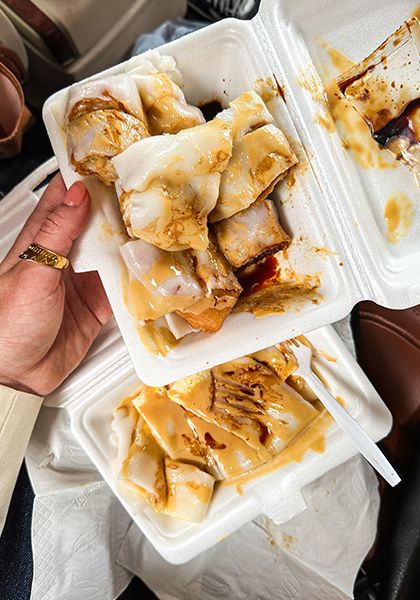
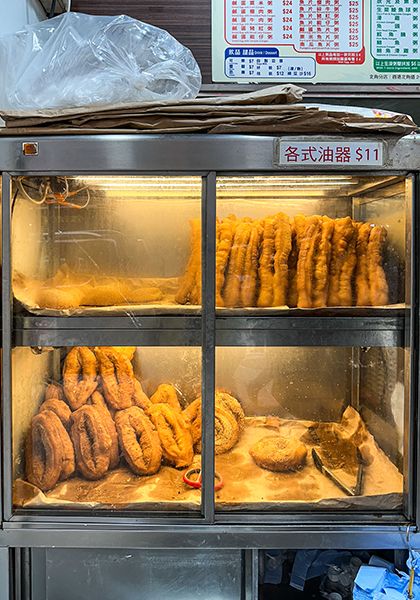
Yat Lok Restaurant
This family business has specialised in Cantonese roast meats since 1957 and has a Michelin Star to prove it. The narrow shop is a well-oiled machine that conducts the eternal queue, dine-in customers and delivery drivers like a culinary orchestra. Roast geese glisten in the window, but the juicy char siu pork and soy chicken are just as popular. Hot tip: skip the line and order takeaway, they’ll serve you right away.
34-38, Stanley Street, Central, Hong Kong
MasterChef moment: This was my last mouthful in Hong Kong. We were filming the final episode nearby and had a 15-minute break, so I figured, why not?

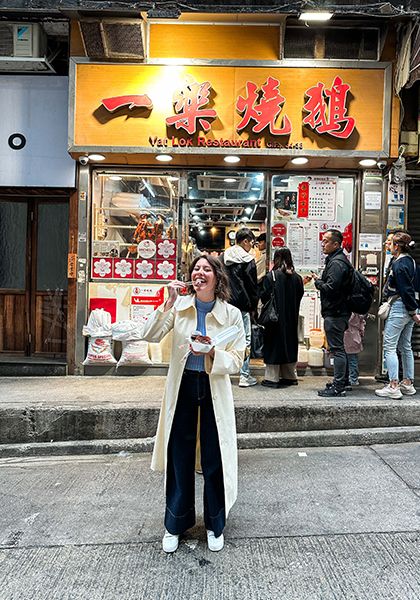
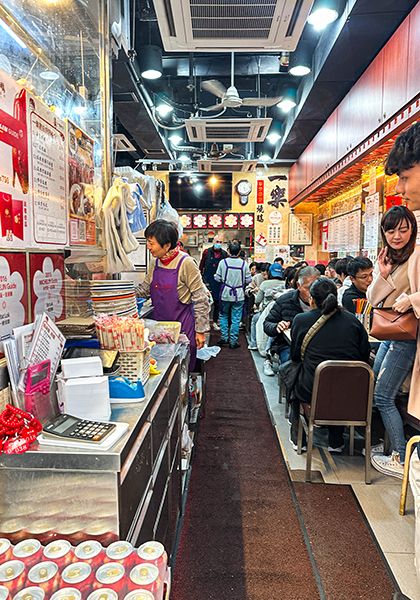
Our crew travelled with thanks to the Hong Kong Tourism Board and Cathay Pacific.
Join the Eat Curiously Movement
Subscribe to the food newsletter that goes deeper.
